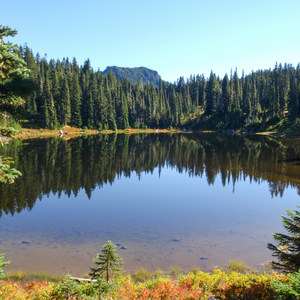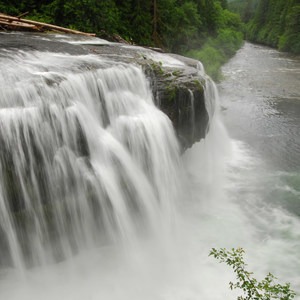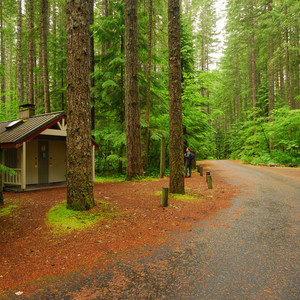With over 150 alpine lakes, and in an area of Washington State visited by few people, the Indian Heaven Wilderness* is a backpacker’s heaven. With nearly two hundred lakes and numerous peak outcroppings, creating a weekend itinerary can be a challenge. One easy option is a visit to Placid Lake. Rambling through a forest of noble fir, subalpine fir, mountain hemlock and huckleberries, the trail takes you to Placid Lake, and then, in the shadow of Bird Mountain, climbs the moderately arduous 900 feet to the Clear Lake area just west of Lemei Rock. Once you reach Clear Lake, the Wilderness area is open to explore as you see fit. Be forewarned: due to the extensive network of lakes and meadows be sure to bring your mosquito repellent, particularly in early summer.
Here are some additional exploration ideas for the wilderness area: scramble an additional 700 ft. to the top of Bird Mountain for incredible views of Mount Adams, Mount St. Helens, Mount Hood, and Mount Rainer; hike east 3 miles to Lake Wapiki on the east side of Lemei Rock; or hike south past East Crater on the Pacific Crest Trail for 3.3 miles to the Blue Lake/Lake Sahalee Tyee area.
* The Indian Heaven Wilderness is a protected area within the Gifford Pinchot National Forest located between Mount St. Helens and Mount Adams. At roughly 20,960 acres, the area is an elevated volcanic plateau averaging 4,000 to 5,000 feet in elevation, and dotted with more than 150 alpine lakes. The plateau itself is comprised of numerous overlapping shield volcanoes, spatter cones, and cinder cones, all erupting as recently as 8,000 years ago, creating the majority of the wilderness area's most prominent peaks, including Lemei Rock, the area's highest point at 5,927 feet. Since that time, the area originally known as “Sahalee Tyee” has played a critical role in the livelihood of local Native Americans who gathered there for berry picking, fishing and hunting, hence its westernized name.


































Comments
Sign In and share them.